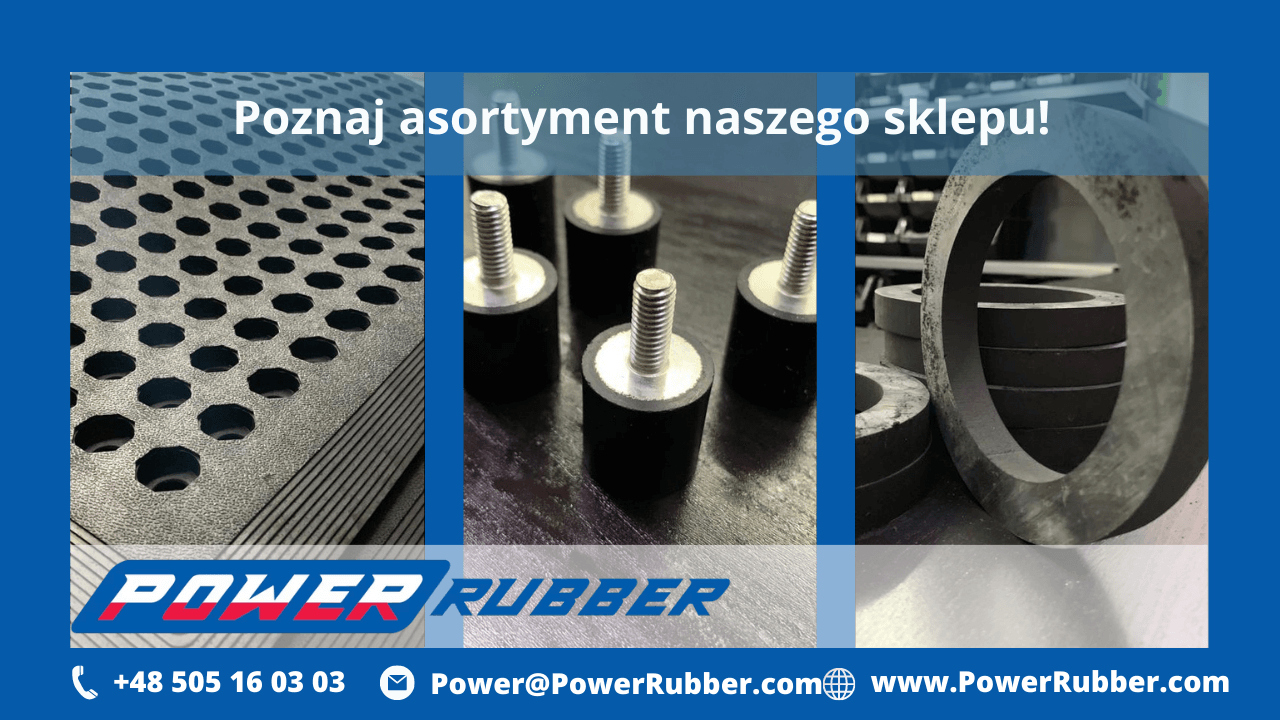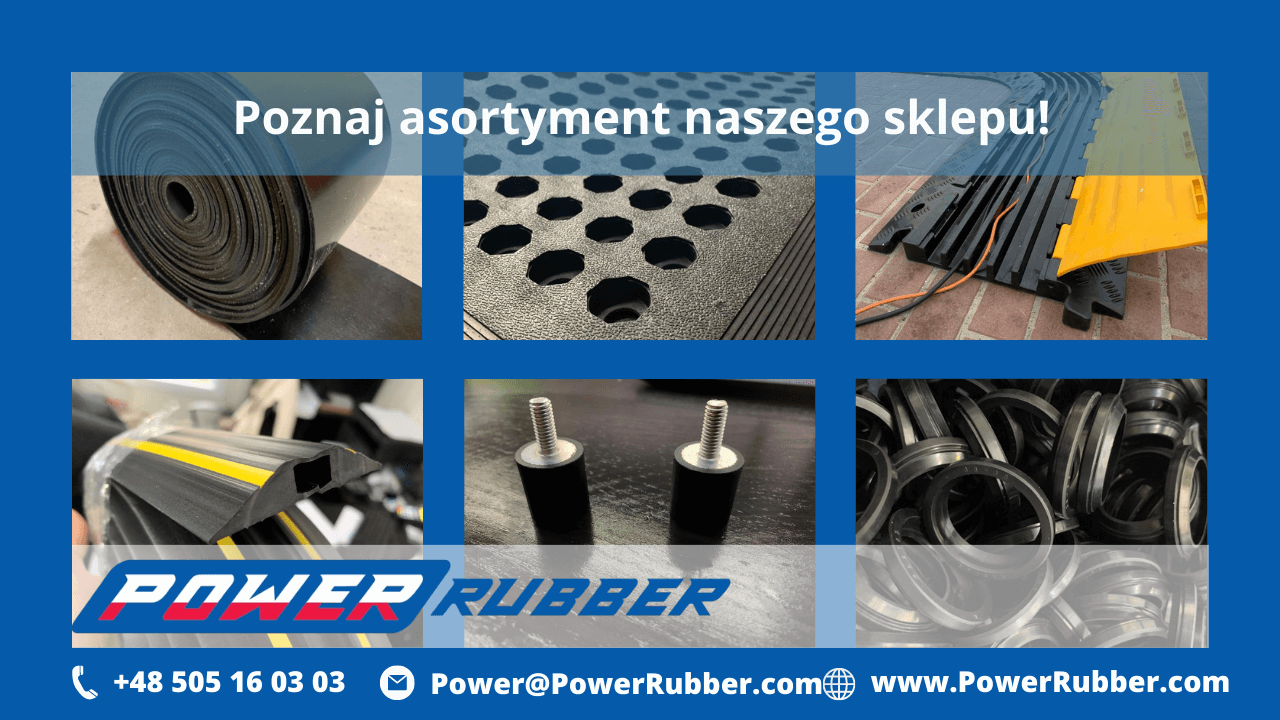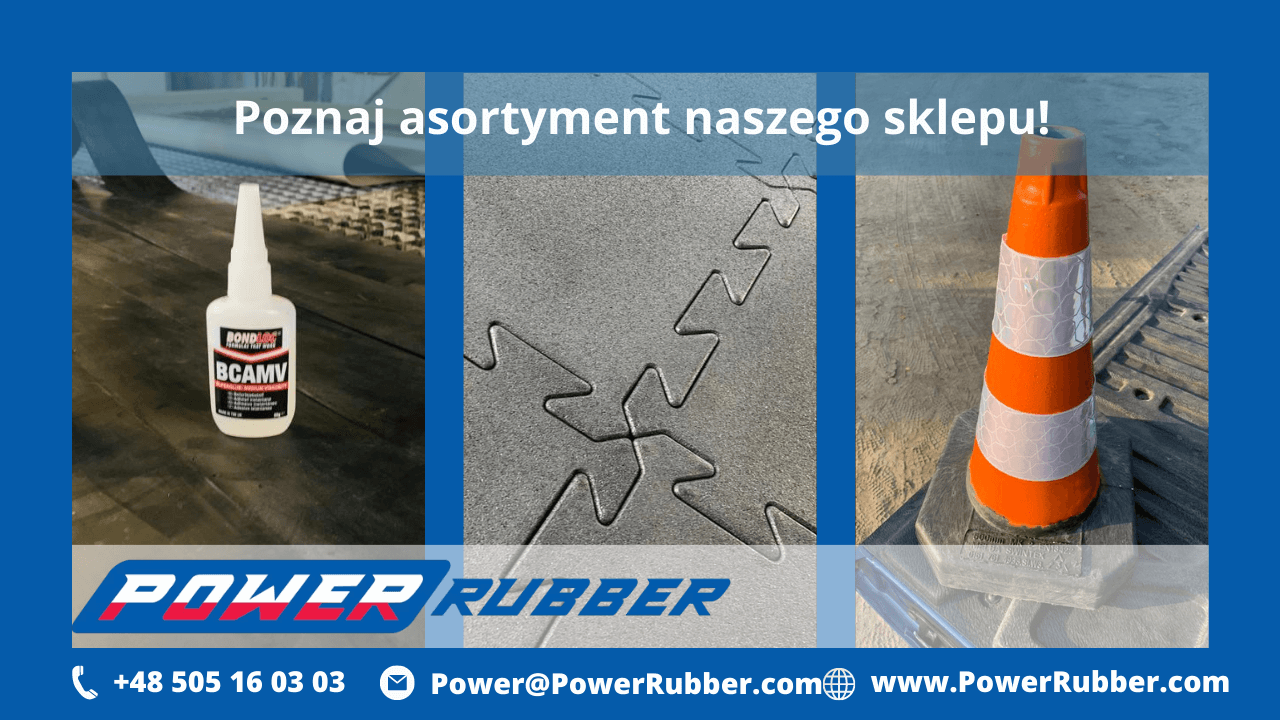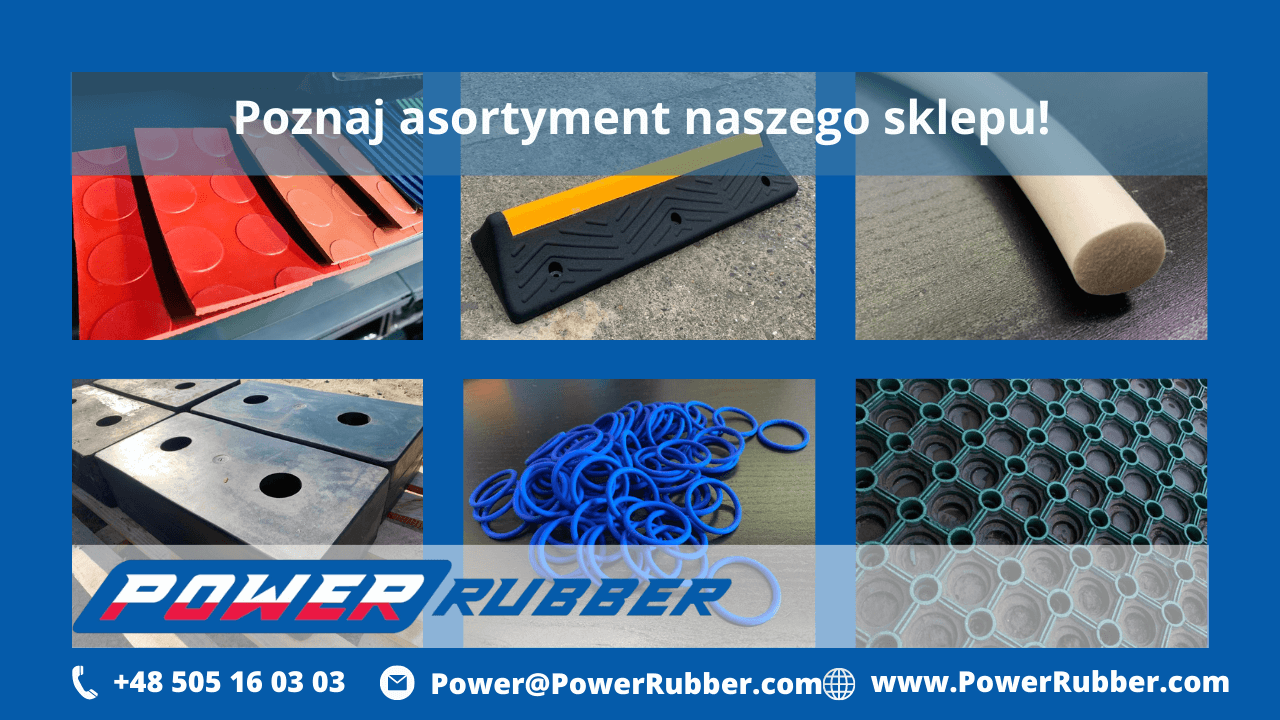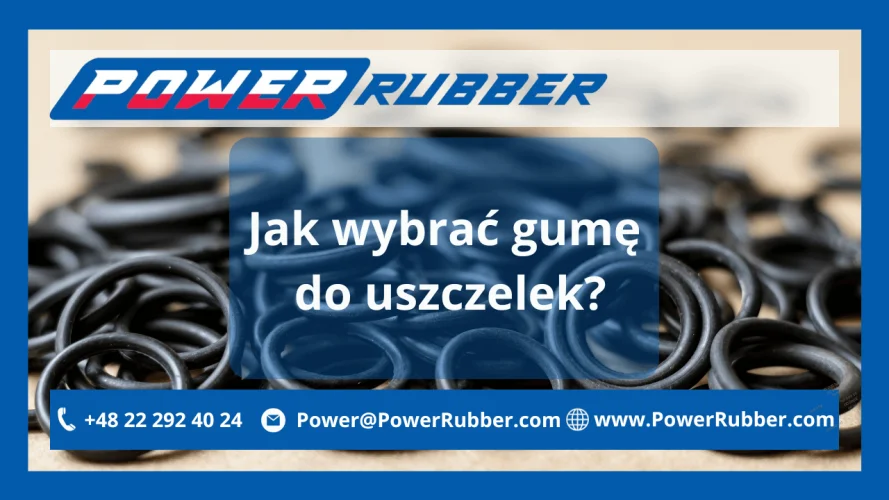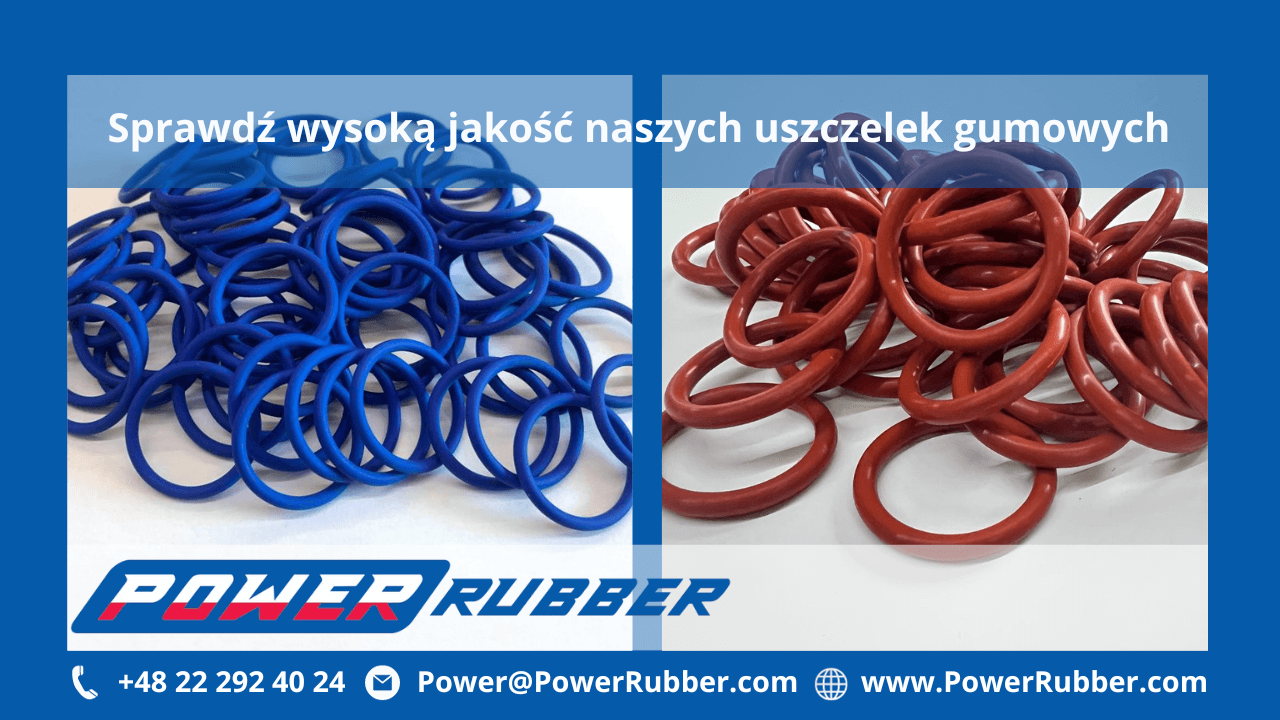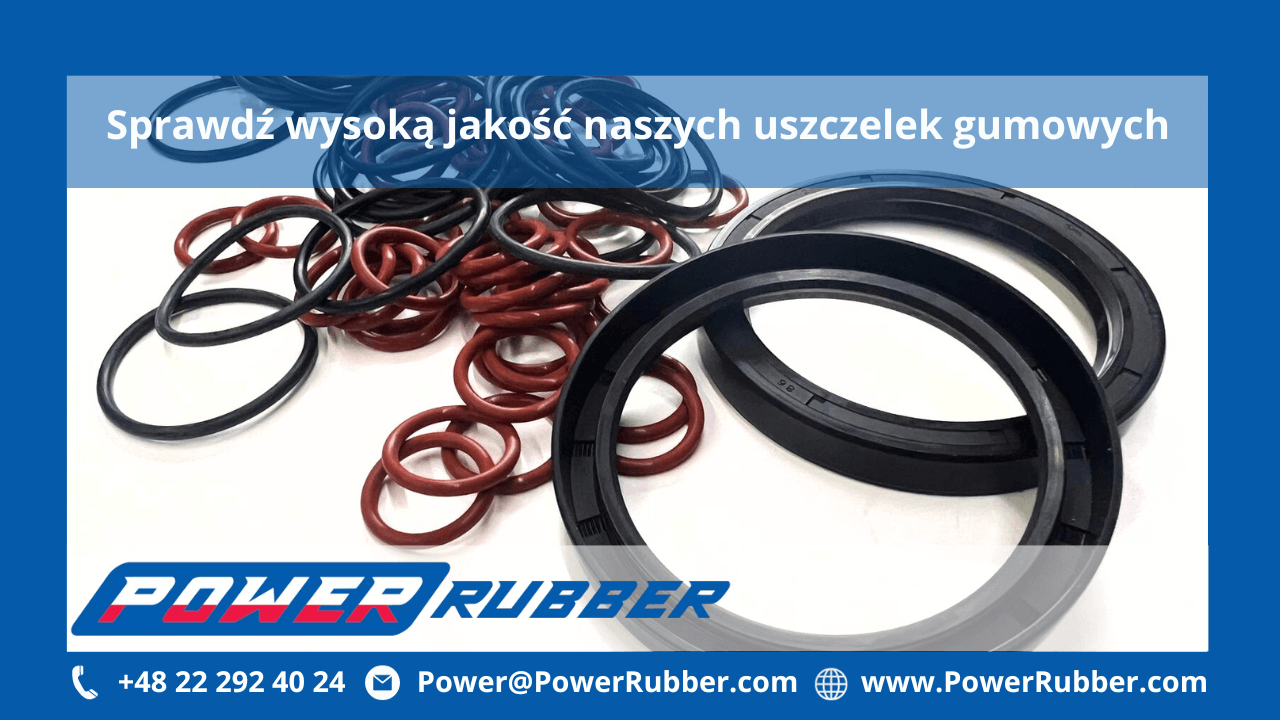How to Choose the Right Rubber for Seals – Debunking Myths and Confirming Facts
At Power Rubber, we offer high-quality rubber seals that are essential components in various machines and devices. These seals are designed to ensure safe operation and reliable performance. Thanks to their special properties, they effectively prevent unwanted leaks of liquids, gases, and semi-solid substances.
Key Considerations When Designing Rubber Seals
Operating Environment
Each application environment is different, making material selection crucial for effective sealing. The right rubber must withstand the specific external conditions it will face.
Thermal Compatibility
Temperature is one of the most critical parameters when selecting rubber materials. Choosing the optimal elastomer requires considering both low and high temperature resistance. Some types of rubber lose strength at elevated temperatures. It’s important to determine the expected minimum and maximum temperatures and whether exposure is continuous or intermittent.
FACT:
Temperature directly affects material properties. At low temperatures, rubber becomes hard and brittle, which can lead to cracking and leaks. At high temperatures, rubber may shrink, melt, or deform. Materials used in high-temperature applications must resist thermal degradation.
MYTH:
Exposure duration to heat does not matter when choosing a sealing material.
Pressure Resistance
Rubber materials (e.g., NBR, SBR) differ in their ability to withstand pressure. As pressure increases, fewer materials remain suitable. Excessive pressure can cause seals to deform, leading to failures.
FACT:
Determine the pressure the seal must withstand. Select a rubber that performs well under both pressure and heat.
MYTH:
High-pressure applications do not require materials with greater Shore A hardness.
Chemical Compatibility
Seals may come into contact with a range of substances, including acids, fuels, lubricants, and hydraulic fluids. Chemical compatibility is essential to ensure resistance to aggressive media and extend the seal's service life.
Also consider cleaning agents and environmental effects such as ozone, UV radiation, and moisture. These factors may lead to surface cracking or stress corrosion.
FACT:
Identify all chemicals the rubber will encounter. Ensure material compatibility with UV, ozone, and moisture if relevant.
MYTH:
Short-term exposure to an incompatible chemical won’t affect the seal’s performance.
Mechanical Properties
Hardness
Measured on Shore A or Shore D scales, rubber hardness affects how well the material seals and resists compression. A proper balance of softness (for sealing gaps) and hardness (for durability) is key.
Tensile Strength and Elongation
Tensile strength measures how much force the material can withstand before breaking. It decreases as temperature rises.
Compression Set
Rubber may lose its elasticity over time due to compression. Choose materials that return to their original shape after stress is removed.
FACT:
Mechanical performance depends heavily on ambient temperature.
MYTH:
Materials with high mechanical strength always retain their properties, regardless of temperature.
Standards and Certifications
Rubber seals are commonly used in industries like food, pharmaceutical, and medical. Therefore, certifications (e.g., FDA, PZH) are crucial for regulatory compliance.
Examples of important standards:
-
AMS – Aerospace Material Specifications
-
FDA – Food and Drug Administration
-
NSF – National Sanitation Foundation
-
UL – Underwriters Laboratories (safety)
FACT:
Ensure the seal complies with industry-specific requirements.
MYTH:
Certification is optional, even for seals in direct contact with food or water.
What Type of Rubber Should You Choose?
Rubber seals can be made from various elastomers. Below is a summary of key rubber materials and their properties:
SBR Rubber
Made from styrene-butadiene rubber. Offers good impact resistance, heat resistance, and flexibility at low temperatures. Common in brake system seals, shoe soles, and protective clothing.
NBR Rubber
Known for excellent mechanical strength and resistance to oil, fuel, and petroleum-based fluids. Ideal for moderate pressure and temperature environments.
Natural Rubber
Harvested from latex, this rubber is flexible, abrasion-resistant, and maintains elasticity at low temperatures.
EPDM Rubber
Resistant to water, steam, and weather. Widely used in water treatment, HVAC systems, and food processing due to its resistance to mild acids, alkalis, and polar solvents.
Silicone
A high-temperature elastomer resistant to UV, ozone, and oxygen. Non-toxic and biocompatible, often used in the food, medical, and pharmaceutical industries.
Viton® (FKM)
Fluoroelastomer with excellent resistance to chemicals, fuels, and extreme temperatures. Performs well in aerospace, automotive, and chemical sectors.
Polyurethane Rubber
Combines rubber-like flexibility with metal-like durability. Resistant to solvents, heat, and mechanical stress.
Power Rubber – Your Expert in Rubber Sealing Solutions
Rubber seals prevent fluid and gas leaks from valves, pumps, pipe connectors, and more. Each rubber type has unique strengths. Understanding your specific application environment helps select the ideal hardness, flexibility, and chemical resistance.
Power Rubber is a trusted supplier of rubber seals and gasket sheets. We offer expert advice and a wide range of elastomers suited for industrial applications — from automotive to food-grade environments.
For more information, contact us at:
Phone: +48 22 292 40 24 or +48 50 516 03 03
Email: Power@PowerRubber.com
Or use our contact form on the website.

